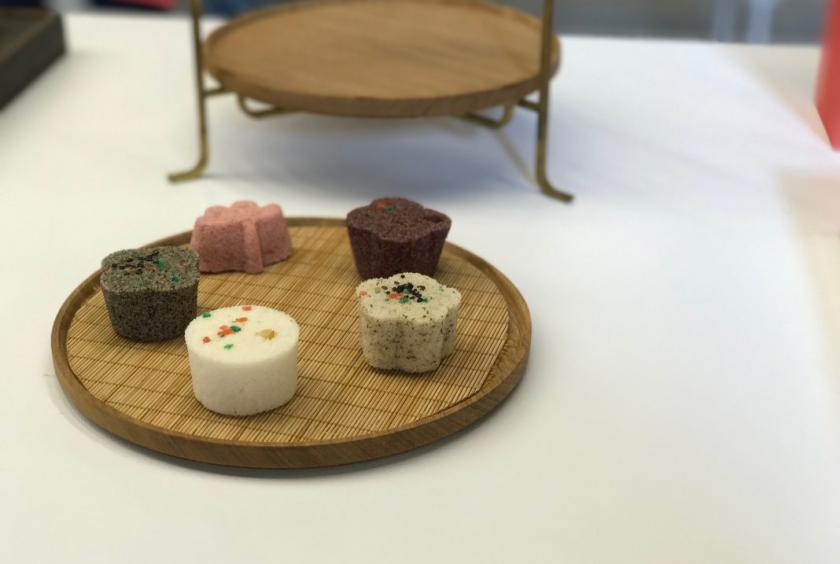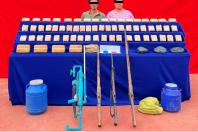
TAIPEI (The China Post) – A mainland Chinese tourist who had visited Taiwan a few years ago were deeply moved by the hospitality and warmth of the Taiwanese and made the statement, “The most beautiful scenery in Taiwan is its people.”
This statement has become a cliché now but no doubt, it points out two phenomena. One is that Taiwan is seen in the international stage as a country that has a rich and profound local culture and snacks.
The other is that the warmth and affection manifested by the Taiwanese is so beautiful that people are highly impressed by such characteristics of Taiwanese. However, in addition to the humane qualities of Taiwanese, what else make Taiwan “beautiful”? Can this “beauty” of human nature be extended to additional experiences?

The Ministry of Education has been promoting aesthetic education since five years ago The implementation of the aesthetic education program, according to the Dean of the College of Humanities and Social Sciences of the National Chiao Tung University, Zeng Chengde, Taiwan’s remarkable work has always been in its art education.
Parents train their children at a young age to learn musical instruments, dance, painting. However, now more attention should be placed on how to transform “beauty” into “aesthetics.” “This is where design comes in; it is about to understand how to improve the external environment,” he said.
Zeng said that the key to creating beauty in life must start from an object. A connection must be identified between the object and its external environment as well as with other related objects.
“We want to create an association with the object. This association can be extended to colors, and color can be converted into pantones. What makes this combination beautiful? Why is it that our streets and our living environment are not considered beautiful? Maybe the color is wrong or the hue is wrong.”
He hopes that the awareness of this problem of beauty can become a problem reflected on by the public and become a way through which they observe the world.

In this regard, Zeng stated, “Actually the practice of beauty has slowly seeped into our daily life.”
Beauty can only start from our daily lives. The Ministry of Education had asked eight practitioners of aesthetics to provide concrete implementation plans. One of these practitioners Hoshing Pastry Store was founded in the Nanmen Market in Taipei City.
It was known for its traditional Jiangzhe steam cakes. A few years ago, the third generation of the clan came back after studying in England and initiated a redesign of the brand and its packaging for the traditional store.
When people think of steam cakes, they are reminded of the ones that are available only during Chinese New Year. These cakes are slowly steamed and cut into several pieces to be shared by everyone in the family.
The store owner wanted to promote steady sales, even outside of the holidays, but most people nowadays would not pay for a big rice cake after their meals. When the third generation inherited the craft, she instituted a thorough transformation.

One of the responsible persons of the company, Ren Jialun said, that because customers are faced with so many choices, Ren decided to shrink the steam cake and provide different flavors that young people love.
Since the cake was small, it was easier for people to taste the different flavors available. The steam cake then became a dessert. After that, they redesigned the product as well as its packaging to conform to aesthetic tastes.
Currently, “Hoshing Pastry Store” has a more urban-sounding name “Hoshing 1947.” It had created a concept store at Dihua Street in Dadaocheng, where the entire production process can be seen clearly through its glass windows.
The third-generation successor of the business uses the Japanese confectionery model with the products’ shelf life lasting for only two days. The intention is to let the customers experience the freshness and the originality of the ingredients.
The company wanted to convey the aesthetics of and correct attitude in eating. While the business of selling the traditional steam cake exists, it has now imbued the dessert with vibrance, youthful culture, and art.

The birth of Hoshing 1947 is also a story of young people taking over the family business and imbuing it with a new life.
However, Ren Jialun, the third-generation head of the business, confided that the reason she was willing to return to Taiwan with her husband was to quell her own doubts: “Why are young people no longer willing to enter the traditional market?”
If you want to know the culture of a country, look at its traditional market. The traditional market is actually a larger source of plebeian culture; however, this has become synonymous with being outdated and dirty in Taiwan.
The answer to Ren Jialun’s doubts are quite evident. Taipei Mayor Ko Wen-je once mentioned that the traditional market is the last thing that the government wants to touch.
The market may not stink but the people consider it as always being a damp, noisy, crowded place. The traditional market may not look and smell pleasant at all and young people no longer visit the traditional markets.
These markets are now only supported by “old” customers. Furthermore, most of their structures are old and dilapidated, thereby hindering rebuilding. That is why the government seems to be at a standstill in making any changes to the place.
Sooner or later, the traditional markets will disappear. Ren Jialun said, “I am a child who grew up in the traditional market. I think it is a pity if this kind of living environment is gone for good.”

The traditional market is about the interaction among people, such as the lady boss who keeps the goods on behalf of her customers and the vendors who almost gifts you her goods when there are excesses. They form the fabric of the traditional markets.
To put it bluntly, the beauty of the traditional market lies in the human relationships that have been formed. The joy people derived from this type of consumption is far different from the pleasure derived from buying in supermarkets.
Fearing that the traditional market model will disappear and that traditional snacks will be forgotten by the current generation, Ren Jialun decided to first target the young people, addressing their preferences first.
“Our ultimate goal is to bring this sense of beauty and experience to more people. Traditional markets can retain their business models while providing visual beauty to attract young people to come and visit and bring their foreign friends.”
“The ultimate goal is to return to the traditional market.”
Ren Jialun said that even when she went abroad and left behind their old family shop, her mind has been with the store. She still desired to return to renew the old store in Nanmen Market. She hoped that the people could come back and spend their money in the traditional market.

“We can do whatever we can outside the market. Let others witness it. We can repackage our traditional industries finely and then bring it back to that field (traditional market). I hope other vendors can also work together and enliven the market.”
However, how can a large market rely only on the support of a single store. The question of how the government will promote beauty and life among the people and in turn change society is still a skill and art that needs to be improved.
When asked if beauty is essential to the development of future society, architect Han Baode once explicitly stated in his two books, “Talking about Beauty” and “Talking about Aesthetics,” that Taiwan desperately needs aesthetic education.
As such, the title of Han Baode’s foreword was, “The Argument of Using Aesthetic Education to Save the County.”
Speaking of the importance of beauty, Zeng Chengde claimed, “Beauty is the backbone of a country’s competitiveness.” Taiwan can learn a lot from Singapore’s aesthetic education.
Singapore is a tiny country and in the past, it was keen on developing its businesses, but there was hardly any creativity. However, in recent years, the Singapore government had added design thinking as part of its citizens’ education.
Not only has it invited its first-class university to promote design thinking, but it also has even required government employees to earn academic credits on the subject.

Zeng mentioned that another successful example in Asia is South Korea. During the Asian financial crisis in 1998, South Korea hit rock bottom; however, in the same year, it began to promote design and aesthetic education.
In the past 20 years, South Korea has become one of the world’s leaders in the entertainment industry.
“There is only one country in the world who can bring their passports into the museums of the European Union without having to pay, and that is South Korea, because their country has already paid for it,” said Zeng Chengde, adding that this was how South Korea cultivates its people.
“What we want to push for is no longer moral, intellectual, physical, social, and aesthetic development. For me, beauty is the driving force for everything.” Zeng Chengde believes preliminary aesthetic education can be observed from the environment, or near the schools. Then, students can try to present what they have observed.
“We need to encourage individuals to think what you have observed and what makes something beautiful or ugly. How can we discuss this or share this with others? This process has already crossed divisions of disciplines. This ability is what we need to cultivate in the 21st century. It is not only about science or business but about integrating design-based thinking into fragmented learning.”
https://chinapost.nownews.com/20190209-508212?fbclid=IwAR0FTtfgnq0c_2Ih_...









